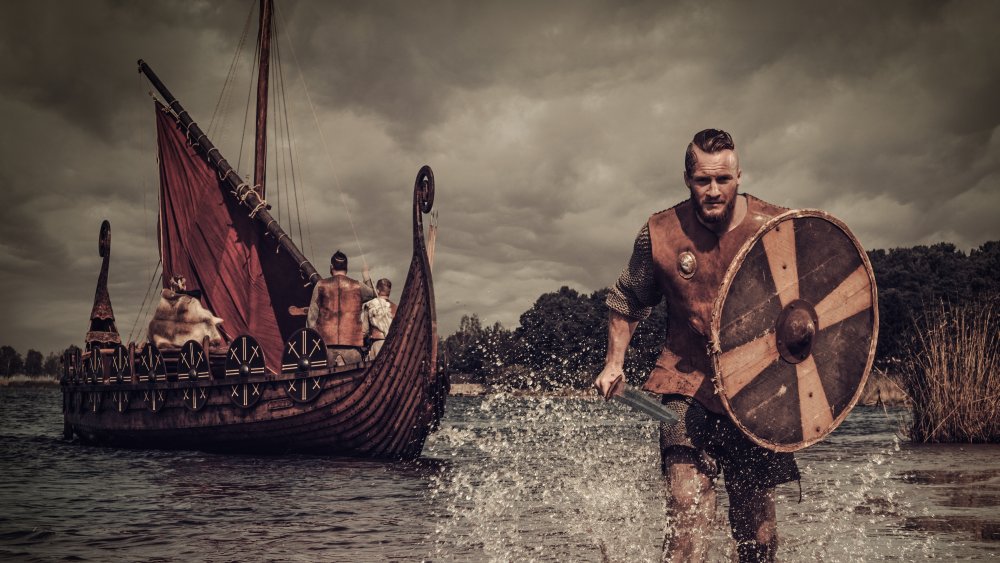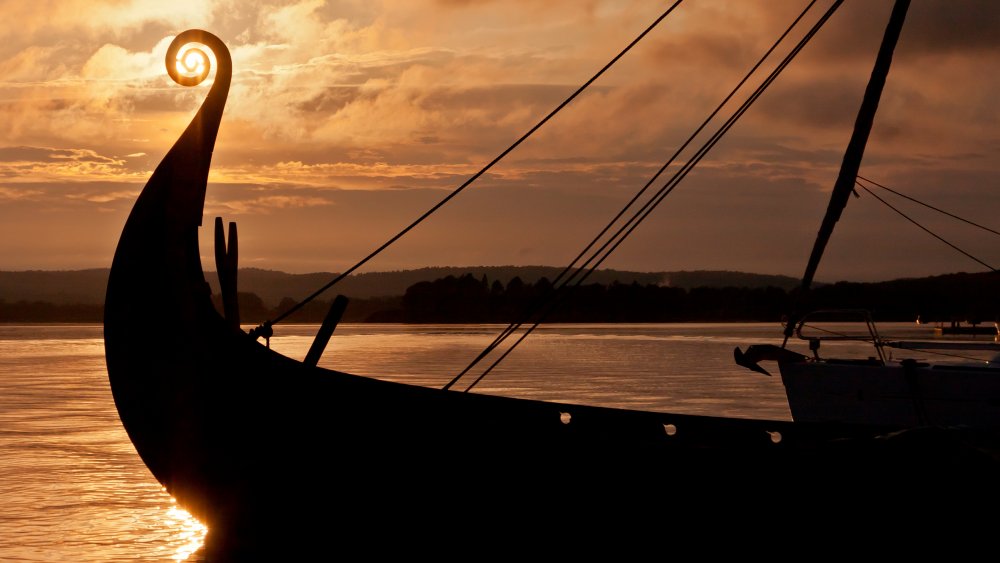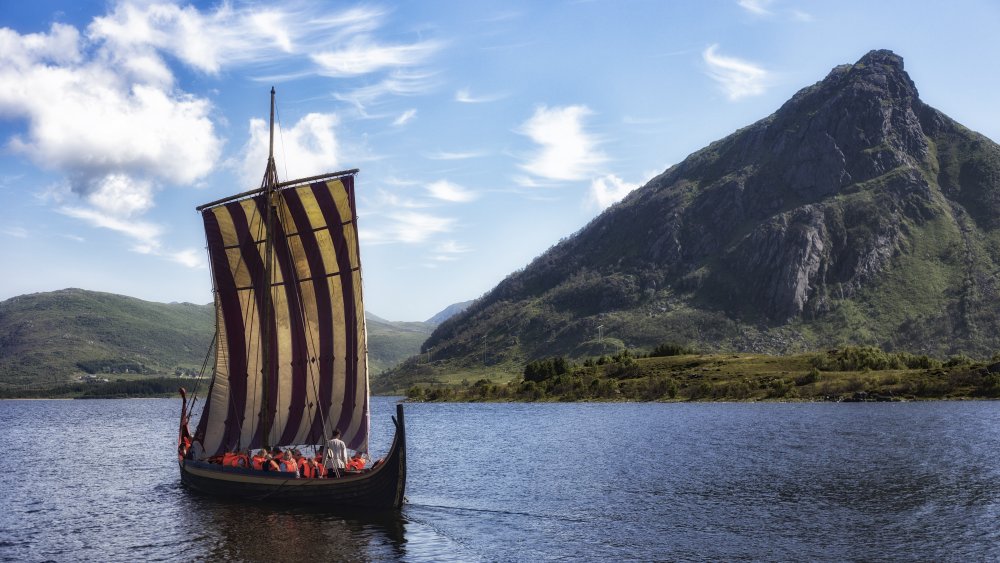The Real Reason Viking Longships Were So Effective
(Note to the reader: It's okay if you hear this article in the voice of the Swedish Chef from The Muppet Show.)
It's the late 8th Century. You're an Irish monk, minding your own business. Tending to crops, maybe, or copying a manuscript, or just praying, as monks have been known to do. And something out beyond the surf catches your attention out of the corner of your eye. Good heavens! It's an ocean-going dragon! Maybe it's a sea serpent! Oh, get ahold of yourself, man — that's a sail. And the ship is getting closer. And closer. Surely it will run aground and everyone aboard will be lost!
And run aground it does — on the beach itself. And great hairy men emerge carrying swords and axes and wade through the water and proceed to sack and burn your monastery. If you're lucky you duck out of the way and survive to help rebuild. If you aren't, you don't.
It was a pretty common scenario around Northern Europe in those days. Vikings, hailing from what's now Norway, Sweden, Denmark, and Finland, had developed the one thing that made them not only a military power, but a commercial power. And that thing was sea power. Not harnessing the movement of the waves, though in a sense they did. What they had that other people didn't have was longships.
The same coming and going
We almost don't, either. Wood is notoriously prone to decomposition. The Ancient History Encyclopedia points out that much of what we know today about Viking longships comes from Viking burial grounds, which in turn tell us just how important ships were to Viking culture: a trench, with a ship inside, and the body and burial goods inside the ship, covered by a mound.
A Viking longship was brilliantly engineered and brilliantly constructed. No sawmills; everything was created by hand. As History Hit tells us, the ships were constructed with overlapping planks — the Vikings came from areas that were heavily forested, so a ready supply of building materials wasn't an issue — that were nailed (later riveted) into place, then caulked, creating a watertight hull. Ribs within supported and reinforced the hull. Propulsion was a two-fer: one mast with a large sail, woven from wool and reinforced with leather strips, says the Royal Museum Greenwich, to help it keep its shape, along with oars. One rudder at the stern provided steering.
Size varied — DK Find Out says that a longship might have positions for anywhere from two to four dozen or more oars. A longship might be up to about 36 meters long, though three have been found in Denmark burial mounds that measure about 23.5 meters long and 3.5 meters wide.
For the oceangoing traders, sails helped make sales
Sturdiness was definitely an issue — the pounding of the northern seas required rugged construction. The shallow draft provided quick navigational response, the ability to deliver raiding parties right at the needed spot, and also allowed for navigating shallow bodies of water — lakes and rivers. Both the front and back matched, allowing for quick reversal of course when needed, especially when navigating the icy waters of the northern seas. As for that dragon up front — yes, but also snakes, and neither quite as commonly as Hollywood would have us believe. And though large and wooden, they were relatively lightweight — they could also be dragged (relatively) easily for portage from one body of water to another. They were speedy as well, making the trip from, say, Denmark to, say, Northern England in just a couple of days.
Although raiding was just another day at the office, remember that the Vikings were also explorers and people of commerce. They established settlements beyond Scandinavia, settling in Greenland, Iceland, and (though not for long) Canada, as well as York, England. They were raiders, but they were also traders, and their sturdy, shallow-draft ships allowed them to traverse inland waterways of Eastern Europe and enabling them to do business with the Middle East. In time, Viking longships were designed for cargo transport — wider, slower, but with more room for goods.
The Vikings were people of business. Ask anybody on Wall Street: Sometimes raiding is good business. And sometimes good business is raiding.


